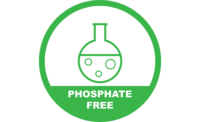Food industry reassessing phosphates?
The food industry is researching and testing natural alternatives to inorganic phosphates, due to recent health concerns.

Due to ingredients such as phosphates, processors of lunch meat, sausage, ham, canned fish and processed meats can offer long-lasting, moist and tender products. However, as concerns (founded or unfounded) mount that added phosphates are unhealthy, processors may have to review their labeling policy and product formulation regarding added phosphates — sooner rather than later.
All proteins naturally contain phosphates; some proteins, such as milk, soy, nuts and fish, even carry them in relatively high amounts.
Phosphates: A risk or not?In February 2012, German researchers released a paper claiming that high serum phosphate levels increase mortality rates in patients with chronic renal failure and are related to cardiovascular morbidity in the general population (“Phosphate Additives in Food—A Health Risk”). Kantha Shelke, Ph.D., principal at Corvus Blue LLC, Chicago, explains that naturally occurring phosphates in food are not absorbed by humans but added phosphates are thought, instead, to be easily absorbed and create imbalances such as elevated serum phosphate concentration, an issue in people with advanced Chronic Kidney Disease (CKD). However, “critics believe that foods made with added phosphate are consumed largely by persons at the lower end of the socioeconomic scale, who tend to consume more processed and fast foods, and therefore expose this demographic to pathophysiological effects such as vascular damage (endothelial dysfunction and vascular calcification),” she says. According to Roger Clemens, Ph.D., chief scientific officer of La Mirada, Calif.-based Horn and adjunct professor, Pharmacology and Pharmaceutical Sciences, University of Southern California School of Pharmacy, “in a healthy person this is not an issue, but for those predisposed for kidney problems they need to change their dietary process and exposure to phosphates, which is hard because every food except water has phosphates.” He notes it would be helpful for consumers to have more information from voluntary phosphate labeling, but that will most likely be a long time from now as the FDA and medical community do not view them as a problem. |
However, inorganic or added phosphates are used to improve the binding, functionality and appearance of meat, chicken and seafood products today, as well. They also can slow oxidation, preventing off-flavor and color deterioration.
Added phosphates can also texturize solid foods like sausage and surimi, add water to foods like bacon, chicken and seafood (essentially making them heavier and therefore reduce the cost per kilogram of finished product) or solubilize proteins into a solution such as protein drinks, so they don’t look cloudy.
“Phosphates are used a lot in marinades,” says Ray Winger, Ph.D., managing director of U.K.-based Inside Foods Limited “So if you buy a chicken that is marinated with, say, sage and onion flavors, then it will also contain phosphates to help keep the marinade inside the chicken [with added water and some fat]. This makes the chicken taste succulent and juicy and — of course — flavorsome.”
Retaining water, but cutting sodium
Although phosphates are not exactly welcome on a clean label, alkaline phosphate salts can help reduce the amount of sodium in a formulation by increasing the water-holding capacity of meats and also enhance the taste by increasing the pH of the meat mixture — and thereby, the effective salty taste of reduced-sodium meat products.
“By using salts such as tripolyphosphates and hexametaphosphates, a little bit can go a long way to increase the amount of retained moisture and to hold together emulsions that need to be pumped over extended distances during production,” says Kantha Shelke, Ph.D., principal at Chicago-based Corvus Blue LLC.
Indeed, by using potassium phosphate instead of sodium phosphate, a common leavening agent in baked goods, one can reduce the amount of sodium in the baked goods and thus appear, at least, to reduce the amount of “salt,” says Winger.
“In actual fact, it doesn’t reduce any salt at all — it reduces the sodium content, which is the measure of salt,” he says.
Researching natural alternatives
Due to concerns regarding excessive consumption of phosphate additives, the food industry is researching and testing natural alternates to inorganic phosphates and also less harmful forms of phosphates that can deliver similar functionalities, says Shelke.
As an example, Shelke points to an all-natural brine system that has been developed for poultry that consists of Aquamin, a mineral-rich mixture derived from the red marine alga Lithothamnion corallioides.
“The ionic nature of the minerals in Aquamin opens up the meat texture and also holds moisture, in the same way that phosphates do, but without the negative health implications of phosphates,” she says. “The hydrocolloids in Aquamin also help reduce the loss of fats and water from the meat which occurs during cooking, and improves both, taste and the appearance of the product.”
Looking for a reprint of this article?
From high-res PDFs to custom plaques, order your copy today!









